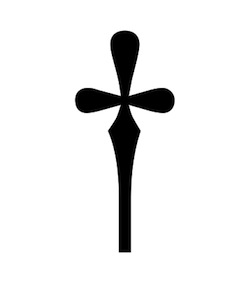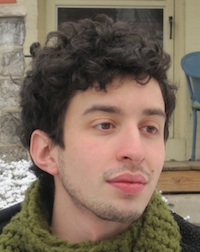
| Jacket 40 — Late 2010 | Jacket 40 Contents | Jacket Homepage | Search Jacket |
This piece is about 4 printed pages long.
It is copyright © Timothy Leonido and Jacket magazine 2010. See our [»»] Copyright notice.
The Internet address of this page is http://jacketmagazine.com/40/r-crawford-rb-leonido.shtml
Alejandro Crawford
Morpheu
reviewed by
Timothy Leonido
194 pages. BlazeVox [books]. US 18.1935402064 Paper.

Alejandro Miguel Justino Crawford was born in Murcia, Spain in December 1984.He attended the University of Georgia, in Athens, Georgia, where he studied English. In 2007 he moved to Lisbon, Portugal and was commissioned to transmutilate old Portuguese literary magazines. In July of 2008 he moved back to Athens. He is the editor of zenSLUM and co-editor of Le Dodo . In 2009 he moved to NYC to study at ITP at NYU, Tisch. He is on Facebook. Image: book cover.
1
The text begins with rumors of its assemblage: its composer has excised poems from a 1915 Portuguese literary journal entitled Orpheu.Trawling scraps for recyclable metric and untapped sonority, Alejandro Crawford’s “transmutilation” process creates a landscape of loose translations and volatile puns. The resultant heap is called Morpheu, on its final page (permit the jump, since the magazine quality tempts so much flipping), a sort of casting credit rolls as the lifted poems are linked to their corresponding sections. Yet, these pairings seem tenuous. When a writer chooses a source text, in this case a group of obscure poems, they inevitably work within the resonance of that room space. But when the latter is so murky and hallucinatory, can we still call this a constraint? How does a literary source, one whose conception is already unstable, continue to function productively? One foot on Morpheu, and a gap begins to widen between the source text and the process of writing through.
2
In collage writing, one confronts a myriad of possible approaches; text is malleable, and holds inestimable combinatory effects. It can be carved into pulsing narrative particles, reshaped according to rigorous scheme, repurposed as a soft metric, etc. But within this constellation, the foggy, Cage-coined method of “writing through” has typically seen re-composers taking the very familiar as their hostage, whether rooted canonical texts such as Milton’s Paradise Lost,or pervasive daily detritus such as advertising, comics, blogs, etc. At variance with this minor trend, A. Crawford has chosen a nebulous object as his primary worksite. While Morpheuis historically anchored by contributions from Fernando Pessoa (along with numerous heteronyms), it’s an otherwise dubious score from which to work, and leaves the unfamiliar reader to hallucinate its presence as it lurks and flickers.
3
in that the fluid of an ogle
wields a window/
yr opening was a black
voile balcony,
opening out
onto a garden of a certain sequined poplin,
opening out
from the inside of a cabinet
made of oak/
4
Each page has a mess of holes and unguarded windows, a room resonance teeming with foreign lingo. It recalls certain Louise Bourgeois sculptures, punctured in such a way as to leave its formal description somewhere between net and lair (I’m thinking “Fairy Dress-maker” most of all). At certain angles it seems to contain and protect its object, yet at others it spills and traps detritus from elsewhere. This is like the suspended and fragile form of Morpheu, in which Crawford is able to perform a timely dismantling of the expectations and trust associated with collage writing.
5
“Wielding a window” works as an apt description of the transmutilation process: Crawford samples and distorts wildly, leaving deliberately rough edges. Haphazard heaps of prepositions make difficult demands on the tongue: “chiseled to a of/ in eye-reflect instinct.” Suitably accompanied by desynchronized page numbers, sound stutters and skips along, and so Morpheu thrives as a sound work as well. Numerous references to digital sampling (“digital audio extraction/ the tide isn’t low enough”) even anticipate the possibilities of working in the age of poetry recordings. A writing-through may eventually become a sort of remixing or recomposing. On the page, we occasionally gloss the textual representation of faulty sound files (“… choppier than normal”) registering as a sort of digital thieves’ jargon:
6
”hw te gn e a l n d n d
sprsf ow o ul t sms lo stei r xpp h w
t h e oly re h l few e l e g s dn
l i ke a m i l e o t fl ur sssh
nd h e r o se b l sd ick
a s li f t d p y”
7
When forms are broken, sound is the first to spill. Sound is the content which form repeatedly fails to contain. Morpheuproves this in sections like the above, which read like a performance of granular synthesis on a poetry mp3. In electronic sampling, sound is forced into windows, often leaving serrations and granular noise swarming at the outside surface. To prevent this, acousticians have used Hann windowing, apodization (“removing the foot” or, basically, to smooth the frame). Alternately, this sort of spillage and loss of sound could be of crucial importance to work on translation, something worth salvaging in the textual representation of sound.
8
Morpheu stands not solely as a project of “writing through” but as a showcase of a variety of modes. Its overall appearance of many-sidedness endows the writing with a strange feeling of neutrality: “I am no ghost but a transparency.” This is colorless writing, in which an ensemble of literary devices is documented without devoting steady attention to any particular one. Perhaps this is its most palpable connection to what Roland Barthes called “Orphean problematics of… writers without literature.” This literary space, a clearing left in the wake of a spastic writing-through, becomes a gallery of empty forms, split containers, “Oak Chests” (the title of part II echoes Zukofsky’s “split cedar chest /harboring our law). Before we are allowed to steep into any site, meaning drains from one mode into the next, while Morpheurecords the entire process “in an offline/ circular room for sure.” When a network of worlds such as this is assembled, its intensity transcends encyclopedic writing: Morpheuis a clearing at which myriad modes elbow each other’s borders.

Timothy Leonido
Timothy Leonido is a writer, editor, and sound artist. He currently lives in Philadelphia.